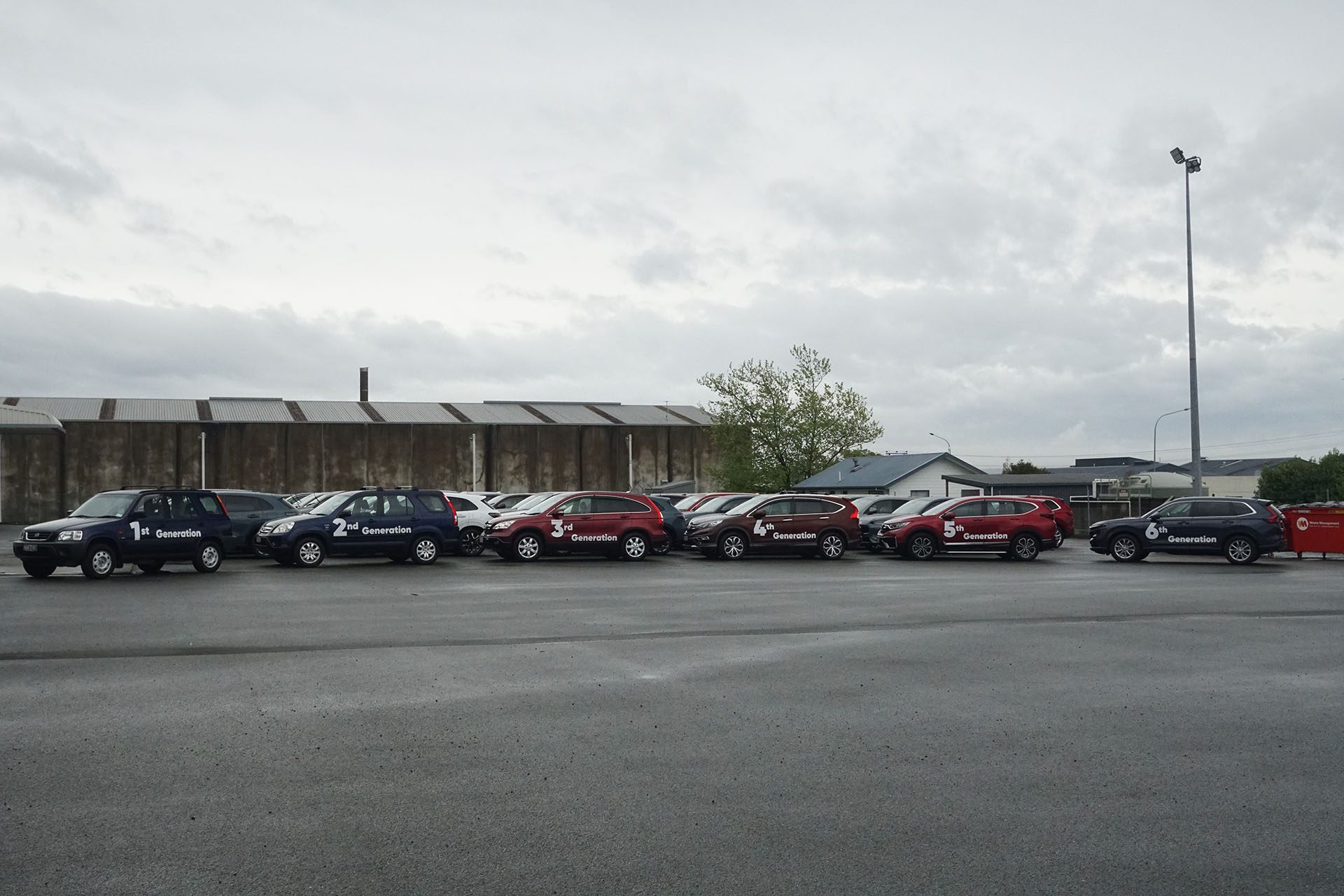So amongst the host of new things we learned about the latest generation (sixth) of Honda’s CR-V (original meaning – compact recreational vehicle) was that for two decades it was either the number one or two selling medium SUV globally.
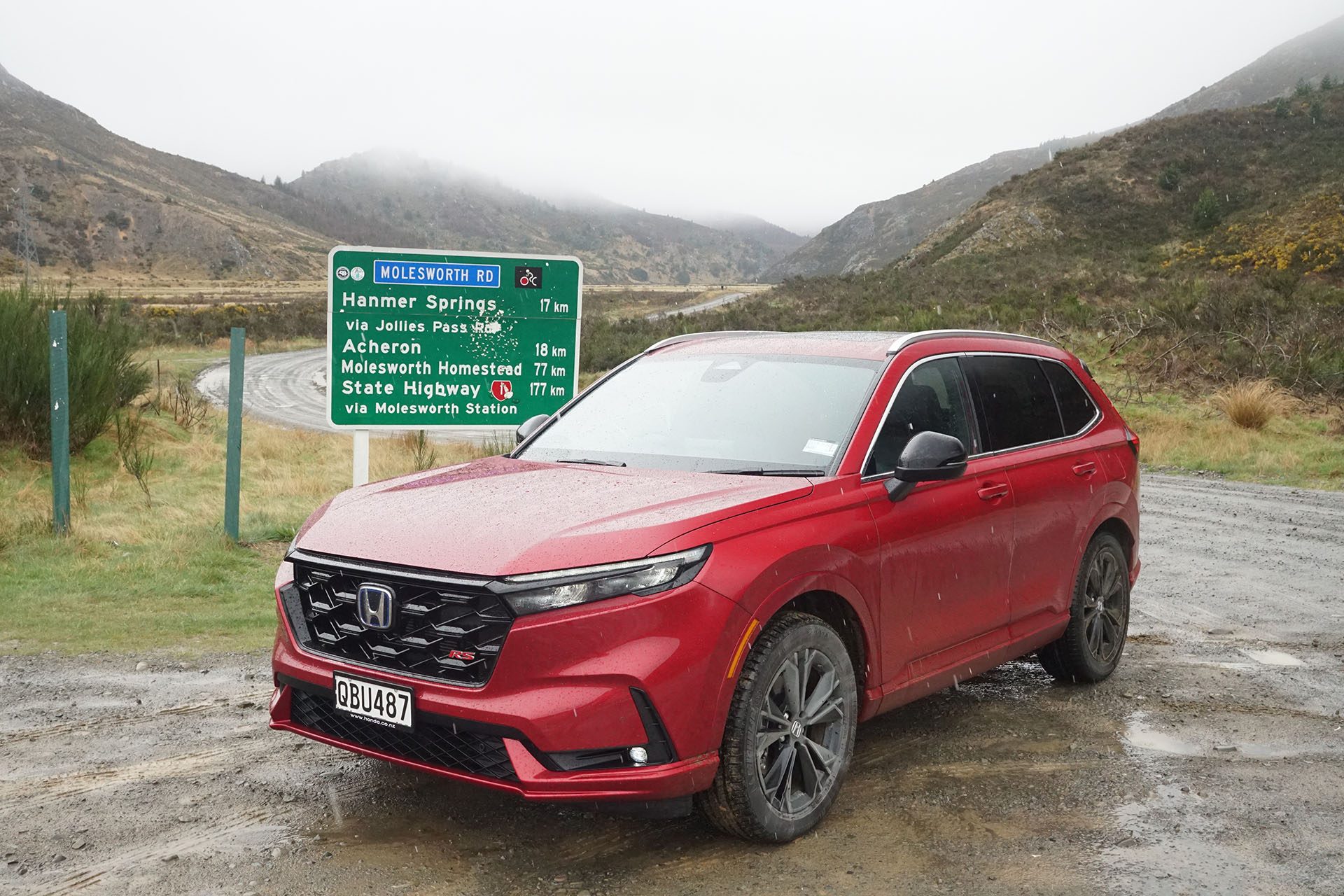
Not so much of late; in 2022 RAV4 and Tesla Model Y outsold CR-V but then that was a model at the end of its life. Now, as Honda turns 75 years, a new larger (longer, wider, taller) CR-V emerges, arriving here as three distinct models. It promises not only more space – marketing slogan is ‘Dream Bigger’ – but also more technology (eg, remote activation of certain functions, like locking/unlocking, and location finder via an App) and a further expansion of the Sensing Safety systems (traffic sign recognition, and low speed braking control to prevent low speed collisions).
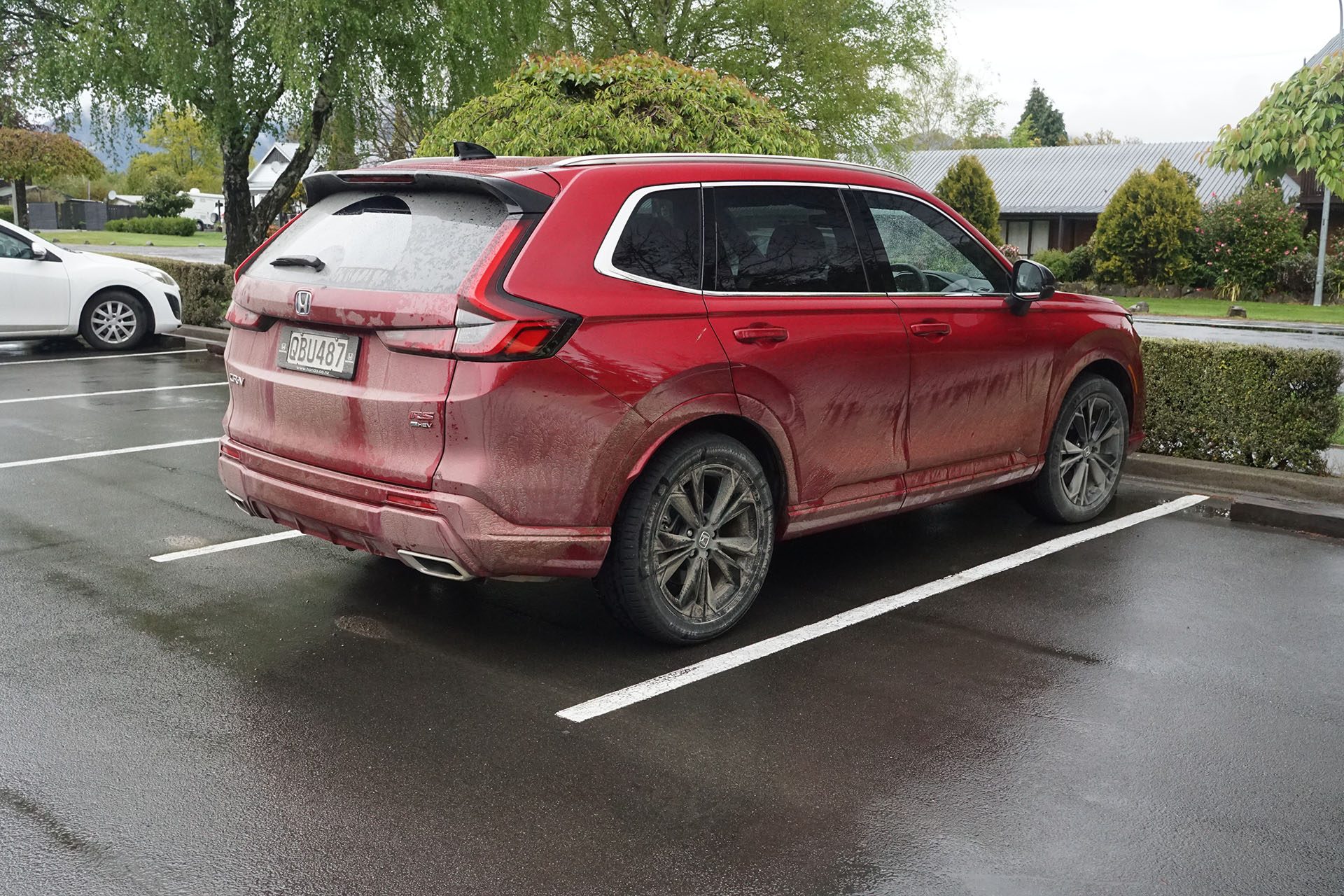
Naturally, there’s a new look, with a more upright and aggressive front end, A pillars are pulled back and the glasshouse is taller for better outward visibility while wheels are 18- or 19-inches in diameter. Only it seems a little more anonymous than before, more like some of the opposition, coincidentally or otherwise. Except for the taillights which are CR-V distinctive.
Of the three new variants, we got to sample two at the SI media launch, both front-wheel drive, while the third, the least expensive ($53k plus ORCs) is an AWD five-seater arriving next month. We drove the range-topping RS e:HEV, a two-motor hybrid with a 2.0L direct injection Atkinson cycle engine, good for 135kW of power and 335Nm of system torque, and a claimed overall fuel use figure of 5.5L/100km, though rightcar suggests 6.4L/100km. The no-haggle price promise before ORCs is $67,000 and it comes with three drive modes, 11 airbags, a 12-speaker Bose sound system, wireless smartphone connectivity and charging, leather trim and more besides.
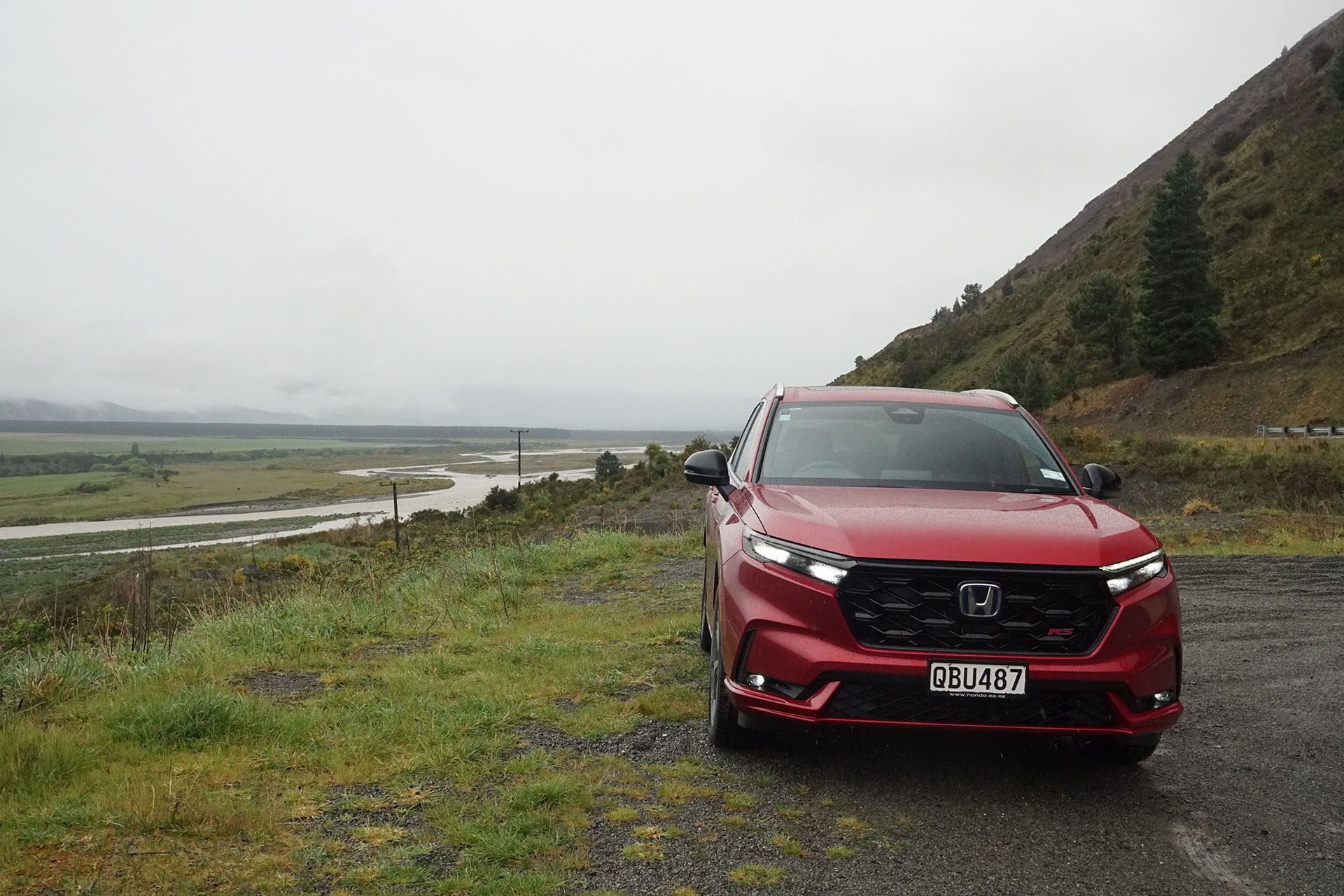
The other we drove was the midrange offering, featuring a revised 1.5T engine mated to a revised CVT and a combined fuel use figure of 7.3L/100km, although rightcar.co.nz suggests 8.1L/100km (187g/km) meaning a fee of $2703. That’s on top of the $57k retail price before ORCs. It too has an impressive safety line-up with 11 airbags, AEB, lane warning and departure systems, adaptive cruise, and traffic sign recognition, amongst others. In fact, spec in the two is remarkably similar, only there are two extra seats in the CR-V Sport 7, as suggested by the name. It’s just a less complex and less efficient powertrain. Paddles select the CVT steps where in the RS they alter regen settings. Where there are three drive modes for the RS, the Sport 7 has just one, an Econ mode button.
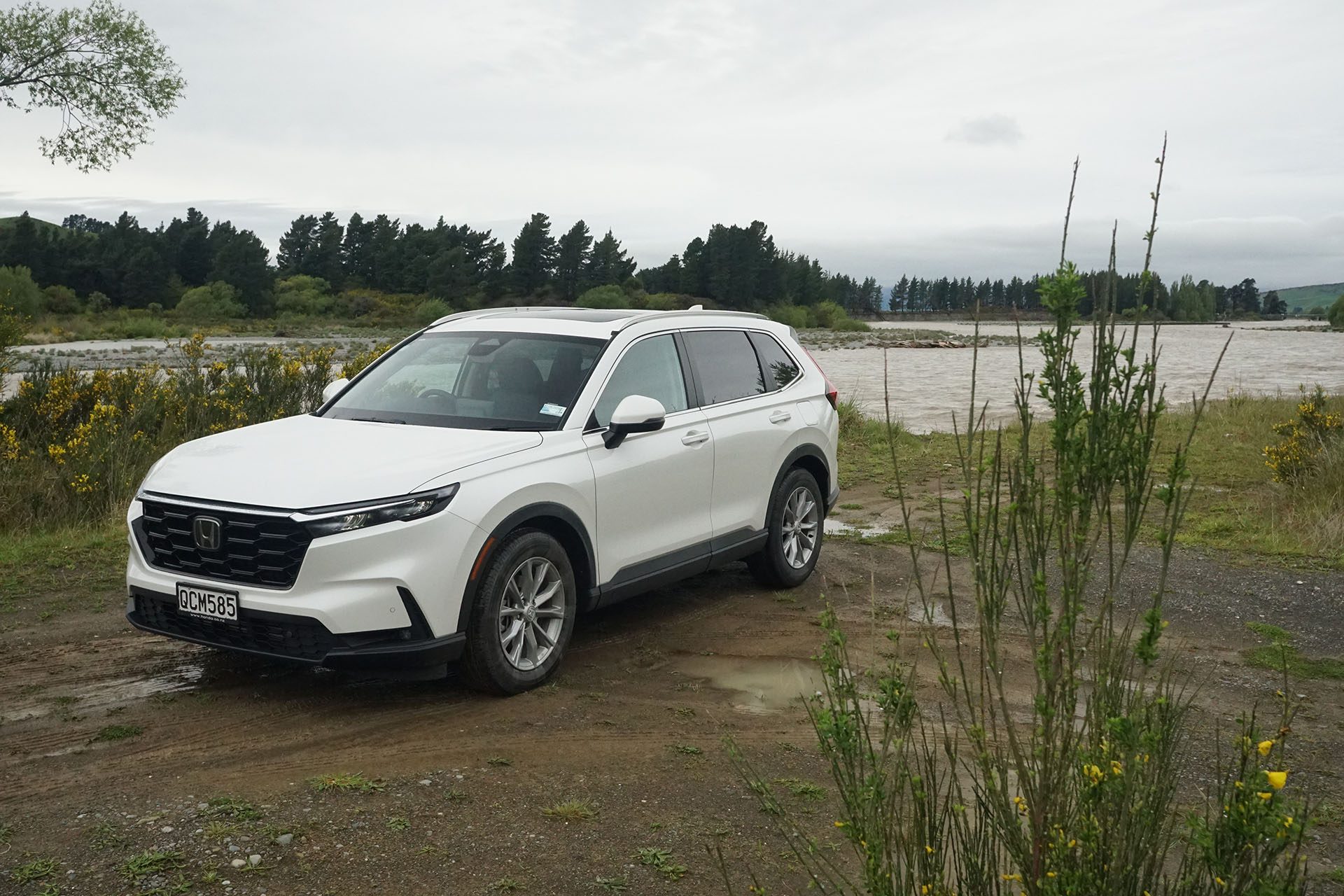
The launch took place out of Nelson, famed for its sunny weather, and involved a decent drive to Christchurch via the Lewis Pass and Hanmer Springs for a stopover. Unfortunately the weather gods didn’t play ball and so too Hermes the god of travel, steering me wrong for a bit. My fault of course for activating sat nav. Should have just turned left out of Honda’s PD and vehicle restoration site in Nelson and then turned left again at Murchison, onward to Lewis Pass and one final left turn into Hanmer Springs. All of which I did except that sat nav wanted to go on up to the skifield (I figured Honda had input the route, but it turns out not). Anyway, we got to see the beginning of the Molesworth Rd, which evidently in summer can be accessed easily enough by even 2wd vehicles, so long as they have decent ground clearance (198mm in the pair we drove). It was cold enough up there that rain turned to sleet for a time.
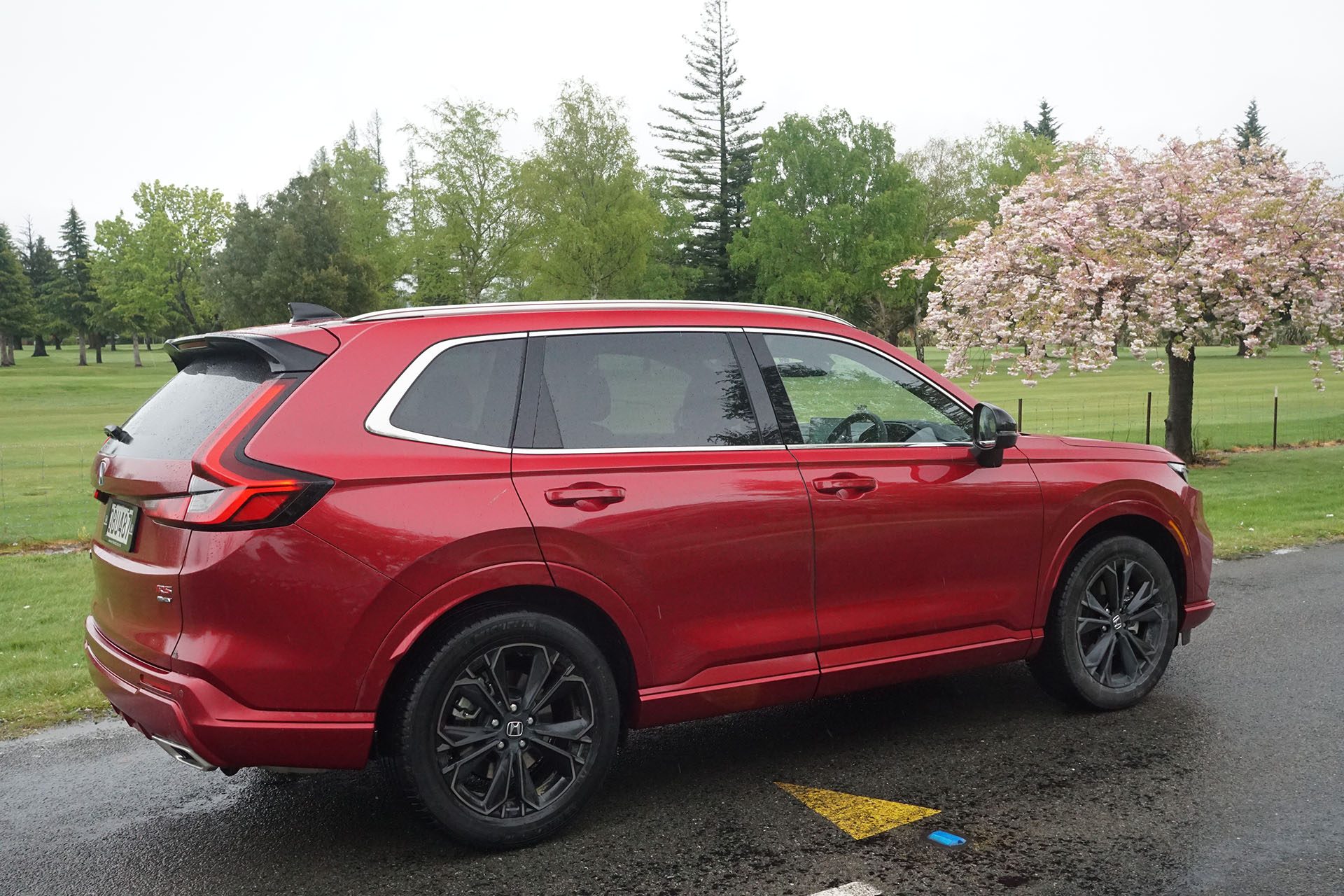
Backing up though, Lewis Pass had changed some since I drove it in the other direction two decades earlier. Not physically so much as the vehicle content. Heavy traffic is still being diverted away from the coast following cyclone/earthquake damage, so it was a truck and trailer fest in both directions. Thank goodness for well marked slow vehicle/passing lanes.
We thought that helming front drivers in the cold wet conditions over those roads might be dodgy but au contraire. The RS lapped it up, as did the Sport 7, though it was mainly dry for the drive on the less demanding roads between Hanmer Springs and Christchurch. The pair are actually quite similar to drive, despite the drivetrain differences. We thought maybe the RS was a hair quicker on the acceleration front but the new turbo of the 1.5 is virtually lag free, a match for the electric motor oomph off the line in the RS. We preferred the look of the RS, as will you, with its mild body kit, piano black mirror caps and grille and smarter alloy wheels. Inside, the leather clad seats feature attractive red piping in the RS, while a tacho replaces the power meter in the Sport 7.
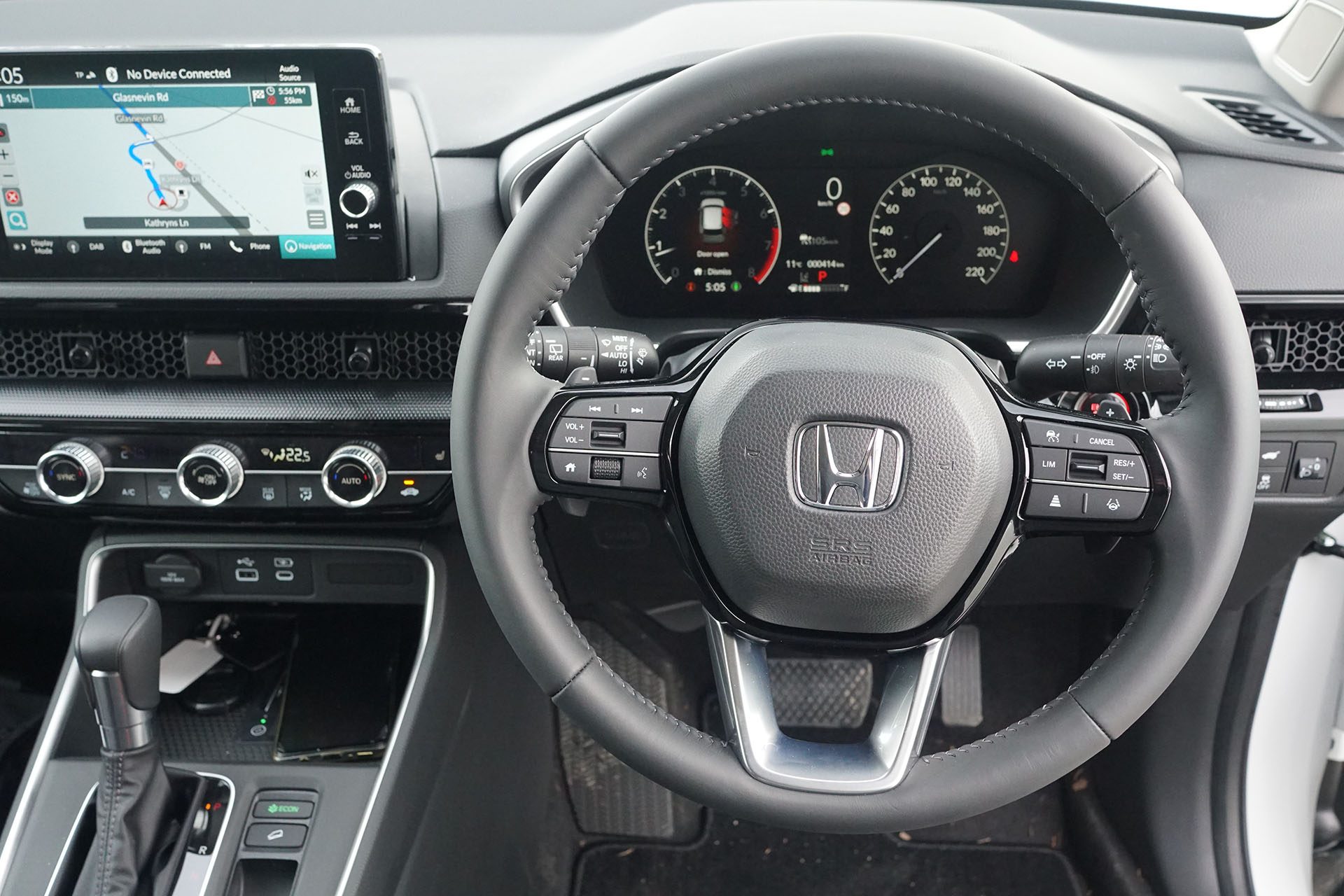
Normal mode suffices in the RS both for town and country running, reserving Sport mode for overtaking. Its haste is because it has a bit more output, the hybrid system good for 135kW and 335Nm vs 140kW and 240Nm for the 1.5T. But the latter is lighter by 71kg. Anyhow, they’re roughly as quick by the seat of the pants. Both can tow but the braked figure is 1000kg for the seven-seater, 750kg for the hybrid and 600kg each for unbraked loads. At low loads, the RS can run on electric power for a bit but not far given its tiny 1.06kWh battery.
These are both easy to operate, with a compact touchscreen and separate controls for the HVAC system so mercifully there’s not much need to jab away at the former. Excepting for navigation which we duly stuffed up. Both are big, airy with the enlarged glasshouse, and in the RS seat comfort is enhanced by a lumbar pump. Visibility in both is first rate, with an enormous rear screen, and big external mirrors. Initially we kept triggering the lane departure warning but that’s easy enough to quash with a few moves in the trip area of the instruments. Unfortunately, it resets at each restart.
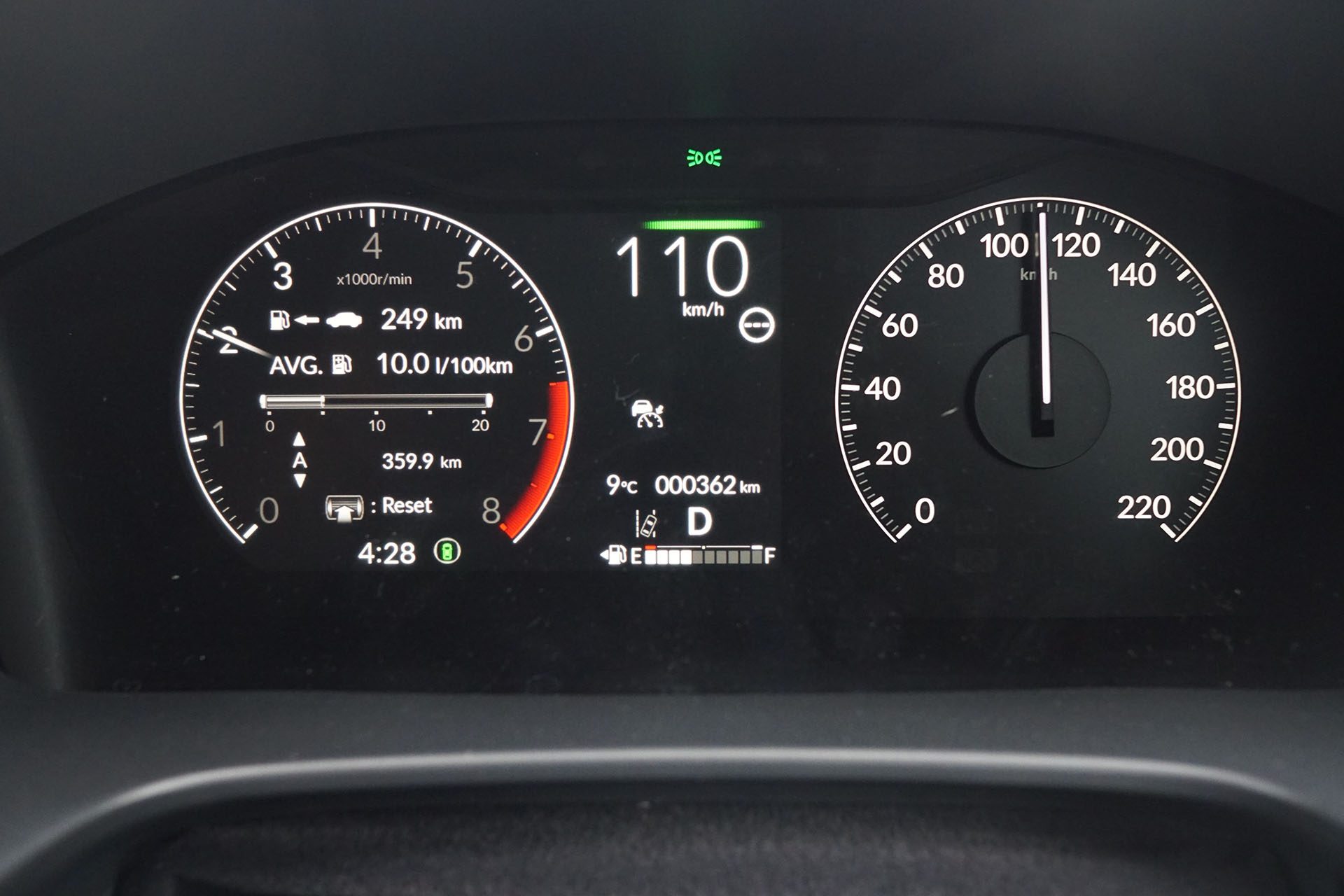
It makes for a calmer ride without that going off so often and tugging at the wheel, but we’d wish for a bit more steering feel. Otherwise, this was most impressive, initially because of its easy-going power production of the petrol electric drivetrain as we left the suburbs behind, and then as speeds rose on the wet roads that essentially run alongside the Buller and Maruia rivers between the towering bush clad hills, covered on the day in mist and cloud. This does a pretty decent impression of AWD thanks to its torque vectoring by brake system (Agile Handling Assist). Enhancing things further is the variable recuperation; heading into corners just flip the lever back from S to B and it slows the car well, so generally brakes aren’t required, and you can fine tune things with the regen paddles. Should you need to slow more, the pedal seems little affected by the regen system. Body roll is well managed by the fixed suspension, and noise over the notoriously vocal chipseal of SI roads seemed quite well muted (evidently improved NVH was an engineering target). The ride is firmish as you’d expect of damping that keeps things level in the turn. During the wet drive, the RS sipped fuel at a rate in the sevens whereas the 1.5T we climbed into afterwards was reading in the 10s. A reset with cruise set at 100 saw the figure drop to 6.5 on the flat.
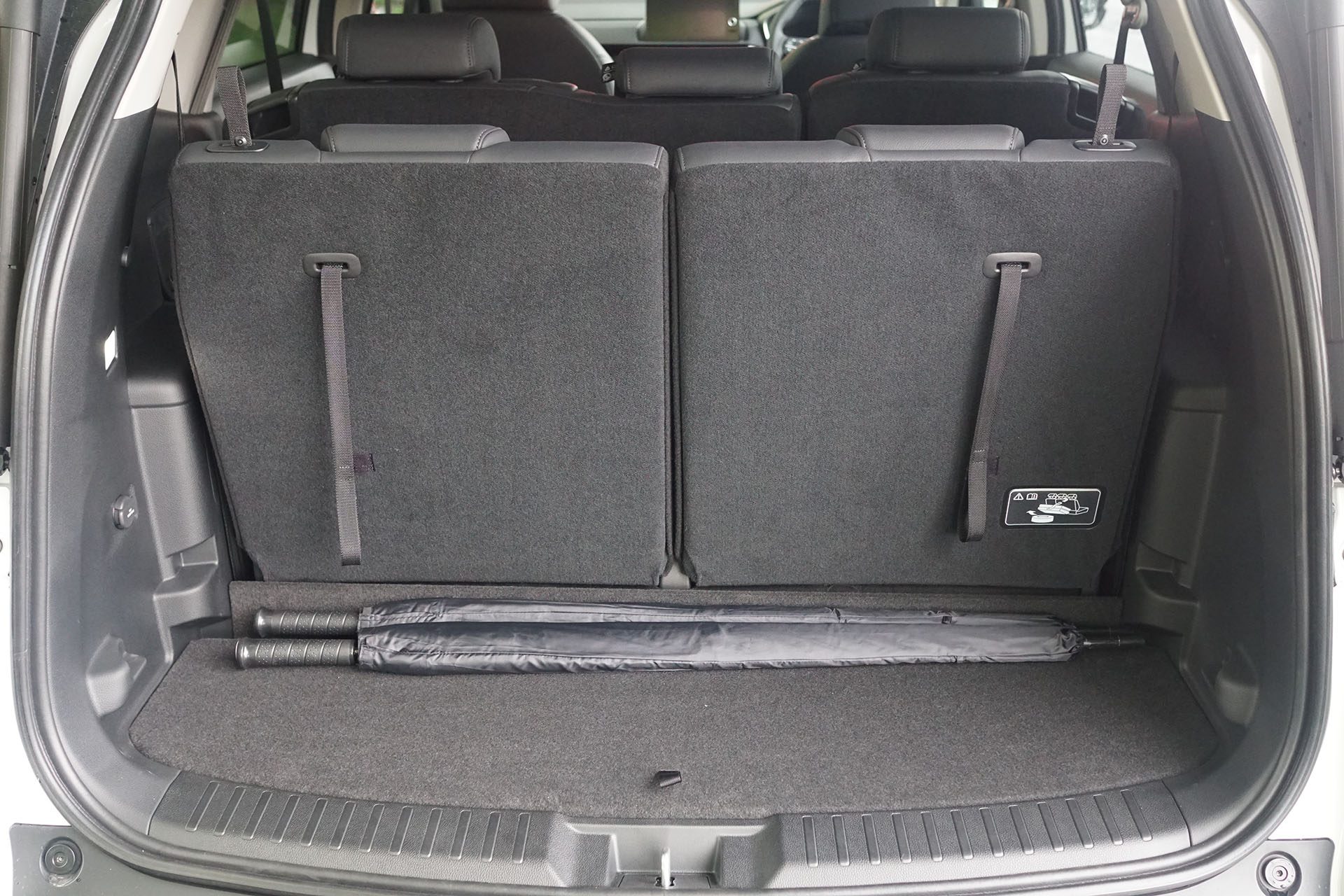
We had a bit of a play with the third-row seats in the Sport 7 which emerge from the floor when you pull on a cord accessed by the powered fifth door. There’s room for a few soft bags in the hold with all seats in use while the middle row pews easily scoot forward and tilt, facilitating access to the occasional seats. These also slide forward and aft, improving third-row foot and knee room but it’s still for the littl’uns. Those in the middle seats fare well for space, the flat floor helping. With all seats in use there’s 150L of luggage space in the seven seater and 581L in the RS. With rear seats down that improves to 1064L in the latter and 840L in the former. Warranty is up to five years and unlimited km, while the battery gets five years and 100,000km.
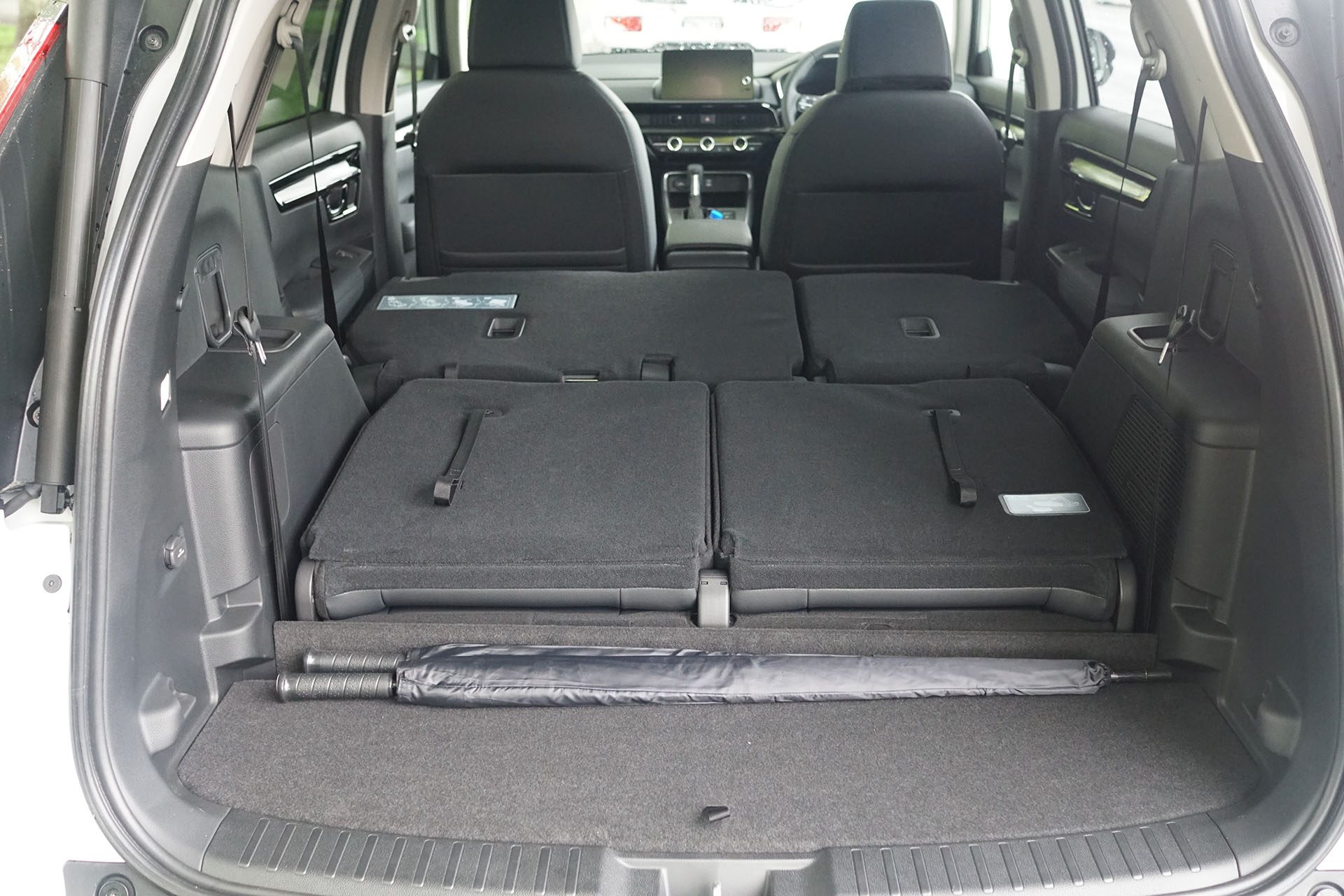
The outgoing CR-V went from $43k-$54k, so this new gen is at least $10k more expensive. Bigger sure, better specified also, but if the budget doesn’t run to that, the slightly more compact but still medium-sized ZR-V with similar powertrains might be a good alternative, kicking off at $47k plus ORCs.
